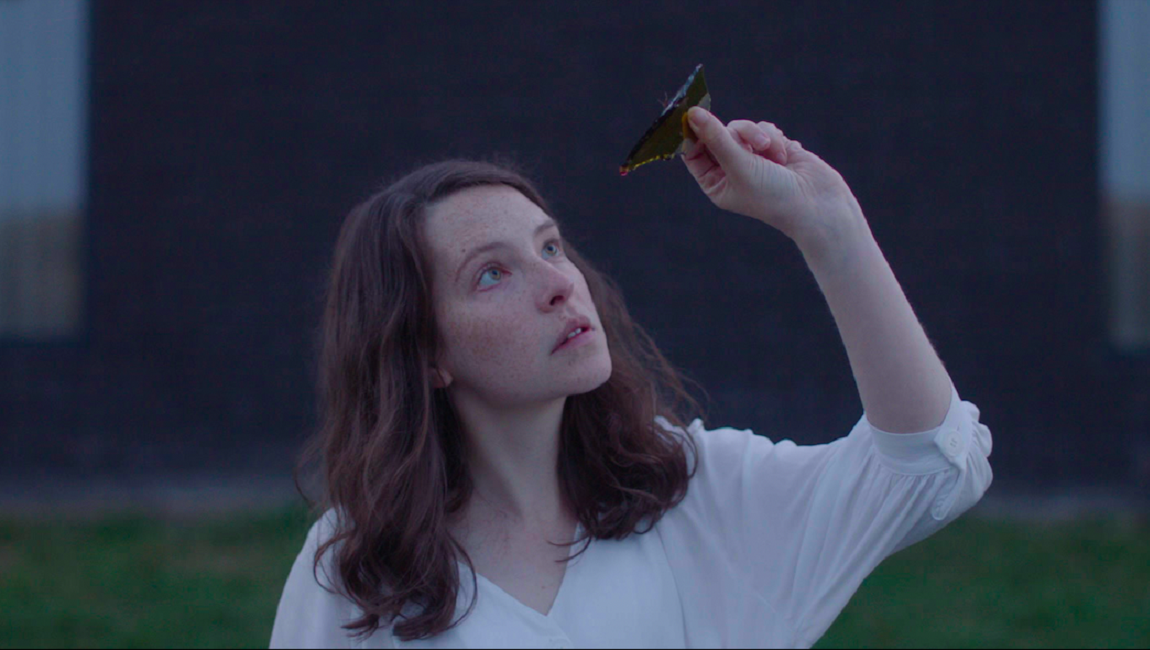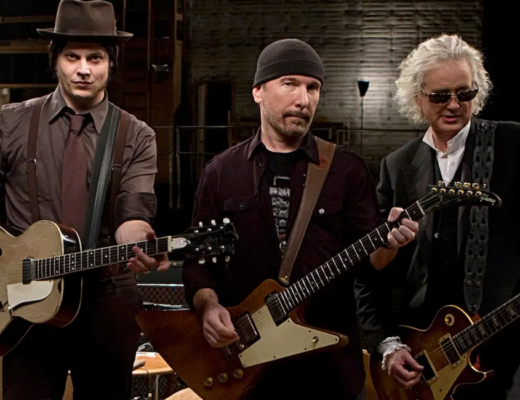Toward the end of Masaki Kobayashi’s The Human Condition trilogy (1959-61), his unsparingly brutal anti-war epic about the Japanese military’s unsparingly brutal treatment of its own soldiers during World War II, our pacifist protagonist, Kaji, has one of his characteristic moments of self-reckoning: has he become the very man he detested? Has he become the “fascist samurai” the Russians, now in control of Japanese territories, make him out to be? Japanese commanders and comrades who vehemently oppose Kaji’s radically non-violent approach to war have already asked him the first question several times. But none of them, or for that matter, even Kaji himself, ever invoked the word “samurai.” Everything — from the inhumane organizational bureaucracy to the soul-crushing hierarchal regimentation — seems to begin with the Japanese military and end with a soldier’s death. All in the name of the empire’s honor. But the Russians, in their stereotypically derogatory use of the term — “fascist samurai” — unknowingly unlock an otherwise safeguarded connection: between a shambolically dishonored Japan post-WWII and a resolutely honorable one in the Edo period (1608–1868).
In the late ’50s and early ’60s, however, Japanese cinema wanted to look back to remember, not to introspect. After operating for seven years (1945–52) under American occupation that restricted local productions from promoting nationalism and feudalism, Japanese cinema wanted to celebrate these very things. Both gendai-geki (contemporary dramas set in the modern world) and, especially, jidaigeki (period dramas typically set in the Edo period) films reinstated Japanese values seemingly obliterated in a post-WWII landscape. The latter glorified the samurai’s code of honor by highlighting its light more than its dark: displays of piety, courage, and discipline complemented the magnificently staged action sequences, recreating an image of Japan that no longer was. Even Akira Kurosawa’s Seven Samurai (1956), widely recognized as one of the greatest (samurai) films of all time, can’t escape these trappings. For each moment of funereal mournfulness and samurai introspection, Kurosawa offers up two more glorious action set pieces and samurai generosity. The film’s end also emphasizes the latter: the farmers forget the samurai’s role in their victory after they get rid of the murderous outlaws. It reminds us to remember the contribution made by those who fought and lost their lives when we needed them most.
Kobayashi also wants us to remember. Not the samurais’ honorable fight for the people, but their cruel exploitation of them in service of their (dis)honorable code. This provides a perfect model for the Japanese military in WWII to discipline their countrymen and women. Everything about their code(s) of conduct — the fussiness over their attire’s cleanliness, the unwavering subservience to authority, the hypocritically inflexible adherence to rules and regulations — prioritizes institutions over individuals. Both systems thrive and survive by creating divisions between people under their command, who must approach the clan or military head to solve that very problem. Honor, essentially, is derived from perpetually dishonoring.
In Harakiri, Kobayashi’s 1962 anti-samurai classic, the director slices through this suit of honor to reveal its polished metallic body, bolted together by rivets and held together by macramé cords. There’s nothing more to it: it’s just a shiny, steely, sturdy piece of manufactured armor that governs everyone who bows down to it and everyone who doesn’t and, in doing so, robs them all of their basic humanity. Kobayashi establishes the overwhelmingly oppressive control exerted by this “master” samurai even before the narrative starts. Its first image is an extreme closeup of an ancient samurai model’s blank face, his dead-eyed stare so firmly fixed on the camera that it seems to break the fourth wall, directly interrogating us for watching him so closely. It doesn’t matter that shrouds of smoke surround him; his surveilling eye is too well-trained to be distracted by that. This remains the case even as Yoshio Miyajima’s camera pulls back, hoping to give a less intimidating picture of the samurai. Still positioned dead center in the wide shot, the master’s upright posture, devil-like horns, and iron-plated black armor — all still shrouded in smoke — make him appear just as imposing as he was in closeup. It’s not about shot length, then, but about shot symmetry. In other words, strict order: Kobayashi’s subsequent images of the clan’s neatly written and tersely narrated journal entries, the mansion’s perfectly symmetrical façade, and its centrally-placed byobus (folding screens with artful designs) highlight this further.
However, Kobayashi also uses other images in these opening three minutes to destabilize this established order. Take, for instance, the two shots placed between the symmetrical closeup shot of the ancient samurai’s face and the symmetrical wide one establishing him as a towering figure. One is a static low-angled shot looking at the samurai figure from a 45° angle; two is a high-angled shot looking down on it from the back. Even if one considers these to be nothing more than establishing shots, their asymmetry — and, in the second shot’s case, the camera’s slight downward tilt — belittles the samurai’s stature held in such mythic regard when the camera looked at him directly. Kobayashi repeats this same technique when looking at the clan’s journal. First, we get an overhead closeup of it, almost sacredly preserved. After a dissolve, we see the same shot, but now the book is open — not in the same position as before; it’s diagonally positioned, now seemingly accessible just like any other book. These are minor formal disruptions to the tightly held-together design of the first three minutes. But ones that, like Tōru Takemitsu’s violently jangled biwa (Japanese wooden flute) score playing over the introductory montage of the samurai mansion’s minimalist interiors and exteriors, put the images’ orderliness into question.
The narrative follows suit. Harakiri is a classical revenge story told out of order: Kobayashi uses flashbacks to detail our protagonist’s backstory and, crucially, slice up the chronological, conflict-free narrative the samurai desires. The initial setup is simple: Tsugumo Hanshirō (Tatsuya Nakadai), an unemployed and poverty-stricken samurai-turned-rōnin, approaches the Iyi clan’s mansion on May 13, 1630, with a request to die honorably by committing harakiri (ritualistic suicide by disembowelment). Once Saitō Kageyu (Rentarō Mikuni), the daimyō’s (feudal lord) senior counselor, hears about this, he fears that Hanshirō is bluffing suicide. He believes that, like other poor rōnins, Hanshirō wants to gain the samurai clan’s pity and, in return, get money or food; or better still, a retainer to work for the clan. To test Hanshirō’s resolve, Saitō tells him a cautionary tale of another rōnin, Chijiiwa Motome (Akira Ishihama), who came to the Iyi house with a similar request.
Cut to the first flashback that, at first, doesn’t emphasize continuity but repetition. We see Motome go through precisely the same line of questioning we have already seen Hanshirō go through minutes before. Their answers, too, are, strangely enough, exactly the same (“I moved here to Edo and found shelter in a back-alley tenement”), as is Kobayashi’s shot-reverse-shot framing of them. That sameness, however, is far from redundant; if anything, its implications are abundant. For one, the exactness implies a potential connection between Motome and Hanshirō that the latter categorically denied when questioned by Saitō earlier. Naturally, this conflict between what we have heard and now see creates suspense. Second, the story’s double presence — seeing and hearing the same setup twice in the first 10 minutes — creates an excess at odds with the samurais’ terseness. And third, perhaps most intriguingly, the introduction of split timelines — the present mimicking the past — echoes the “fascist samurai” moment in The Human Condition trilogy. It extends Harakiri beyond its Edo setting, and dares us to ask which part of Japanese history informs this iteration of fascistic violence.
Kobayashi’s film leaves this question unanswered, moving beyond repetition to detail, step-by-step, the clan’s cold-blooded murder of Motome. First, Omadaka Hikokuro, one of the clan’s skilled retainers, proposes that they force Motome to stay true to his word, even if he expresses a desire to opt out. Hikokuro believes this punishment will instill fear in rōnins, dissuading them from ever approaching the Iyi house with a fake harakiri request. Kawabe Umenosuke, another retainer, quickly agrees, persuading Saitō to approve this punishment to preserve the samurai’s code of honor and enhance the Iyi clan’s reputation. Then, perhaps most cruelly, “master skilled swordsman” Yazaki Hayoto, upon discovering that Motome is carrying a “disgraceful” bamboo sword rather than a cutting-edge metal one, forces Motome to commit harakiri with that. Kobayashi shows the entirety of the rōnin trying his hardest to cut open his belly with a bamboo blade: he seeks to highlight the dishonorably sadistic methods the samurai use to preserve their so-called honor.
In the film’s second half, Kobayashi turns the tables on them. Through Hanshirō, the film performs a prolonged dissection of the samurai code, ripping it apart, piece by piece, without resorting to the sadism they exerted to enforce their honorable code. The narrative switch happens after Hanshirō has convinced Saitō about his intentions to commit harakiri. Sitting in the forecourt with an audience of Iyi samurai, he requests a second — a skilled swordsman who will be responsible for beheading him after he disembowels himself. However, all three men he selects (Hayato, Kawabe, and Hikokuro) are peculiarly absent. The film doesn’t explain the reasons for their absences immediately. Instead, Hanshirō narrates Motome’s story to the samurai audience, waiting for at least one of the three retainers to arrive as his second. In what proves to be the film’s most extended uninterrupted flashback, Hanshirō reveals Motome to be his son-in-law: an honorable man who came to the Iyi House to ask for help only because his wife and daughter (Hanshirō’s daughter and grandson) were gravely ill. In desperate need of money, he had already sold everything — including his sacred samurai sword. So, he faked harakiri, hoping to get immediate help from samurais in a privileged enough position to provide him with that. But rather than inquiring about all this, the Iyi clan mocked him for carrying a bamboo blade before coercing him to commit harakiri with it. Their lack of sympathy, let alone empathy, led to not only Motome’s death, but also his wife’s and their son’s.
Hanshirō questions the value of such a code of honor that values objects over people. He requests Saitō to acknowledge the Iyi clan’s responsibility in carrying out this dishonor in the name of honor: this, Hanshirō believes, is the only thing he wants to be able to take to Motome after he commits harakiri. But Saitō refuses any accountability: he believes that the samurai’s code values one’s commitment to their words more than anything else. It’s only after this boastful claim about the unimpeachable value of samurai honor that Kobayashi and Hanshirō tear it apart. The otherwise appropriately remorseful and beat-down Nakadai performance erupts into near-pantomime levels of hysteria, as he’s armed with information about the Iyi house’s three “skilled” retainers that makes a mockery out of what Saitō believes. Kobayashi reveals this gradually, punctuating each of Hanshirō’s encounters with the three retainers, tauntingly throwing each of their topknots — the samurai is no longer a samurai without these — in front of Saitō. He hasn’t killed any of these people; he’s just killed their “honor” (Kobayashi teases action in these sequences instead of graphically depicting it, almost as an act of retaliation to the samurai’s treatment of Motome). But none of these people are honorable enough to tell Saitō about their defeat: two of them feign illness, hoping to go back to the Iyi clan once their topknots grow back, and one of them commits suicide because of the shame he would otherwise have to face.
Having structurally and verbally — “After all, this thing we call samurai honor is ultimately nothing but a façade” — dismantled the samurai’s code of honor, Kobayashi gives the jidaigeki audience a climactic showdown between Hanshirō and an army of Iyi samurais. But that, too, is devoid of grandstanding. He presents it in all its clumsily choreographed glory: Hanshirō escapes the chasing samurai by throwing sand at them, while he pushes others into collapsible sliding door panels so that he might enter the mansion’s interior, before, finally, clinging to an ancient samurai’s armor to buy himself more time. But for what? Didn’t Hanshirō want to die? Didn’t he genuinely want to commit harakiri? It seems his and Kobayashi’s objective is to dismantle the mythic symbols of the samurai we saw at the beginning. So that even when the clan erases this dishonorable incident in their honorable history by staying true to their lying words, what we remember is blood splattered on beautiful byobus, shorn topknots lying on clean ground, and the image of samurai armor forcefully put together to preserve its petty honor.







